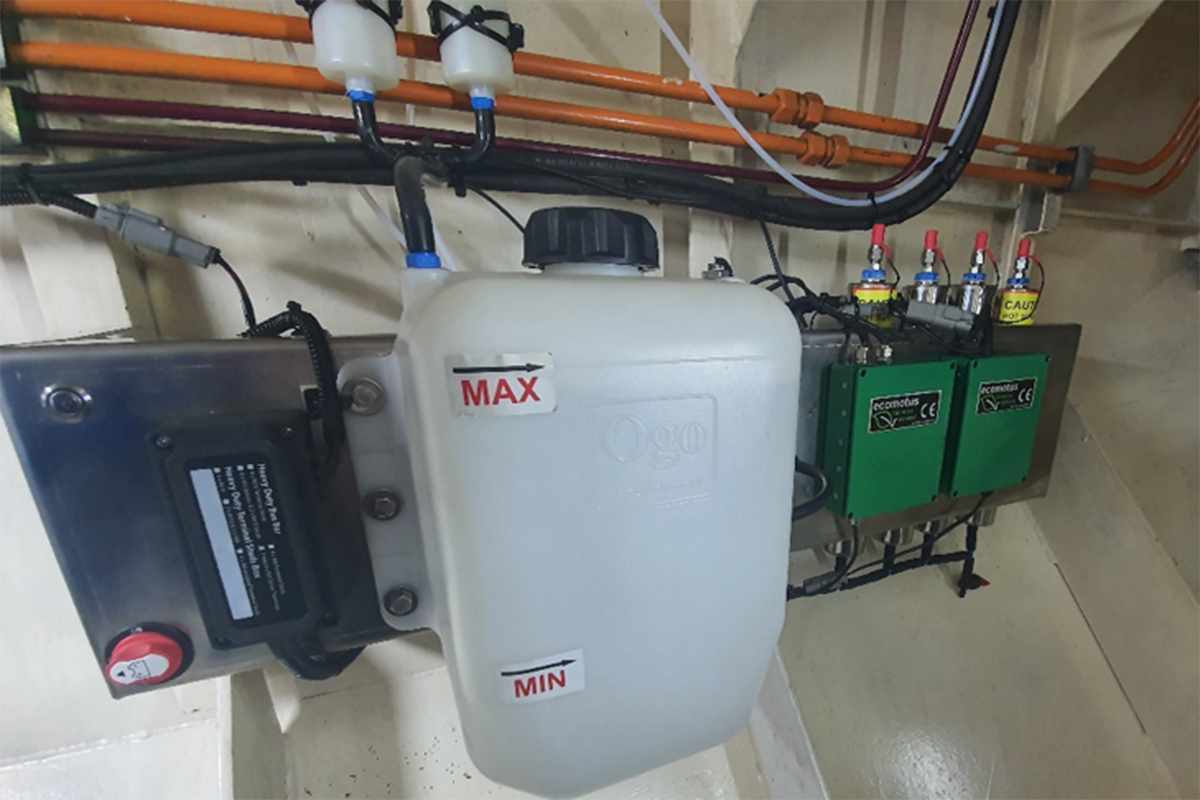Kate Morris and Andrew F Johnson of the MarineSPACE group at The Lyell Centre, Heriot-Watt University take a look at what COP could mean for your fishing operation
With the UK acting as host for the COP26 summit, the national media is awash with climate change-related phrases like ‘net-zero’, ‘climate-smart’ and ‘1.5° warming’. As the world attempts to reduce carbon emissions to alleviate the impact of climate change, both the challenges and opportunities are apparent for the UK fishing industry.
Reducing fisheries’ carbon emissions will require a combination of approaches involving the use of new fuels, engine technology, and vessel and fishing gear design. It will also see increasing management of blue carbon habitats – those aquatic habitats that contain significant carbon stores such as seagrass, fine muddy sediments and kelp.
Reducing the overall carbon footprint of the fleet at sea will be made simpler if stocks are rebuilt so that the same catch can be taken with less effort. Inevitably, however, some blue carbon habitats may need protection from fishing, or the adaptation of gears to avoid damaging carbon-capture ecosystem functions.
The potential for bottom fishing gears to remobilise carbon stored in sediments received considerable media coverage in 2020. While many in the scientific community dispute the accuracy of the claims made within the Sala et al. 2020 study, the truth is that we don’t know to what extent this is an issue for blue carbon habitats.
The industry/science community is ahead on this agenda, with innovative gear trials to test solutions that reduce the bottom impacts of towed gears. Reducing the weight of certain components of gear, or altering the way it performs relative to the seabed (e.g. the use of semi-pelagic otter doors), greatly reduces impacts on fauna and carbon stores. Lighter gear also means less drag, less fuel use, reduced greenhouse gas emissions, and hence a reduced fuel cost.
Examples of new gear designs include trawl gear trialled in the Barents Sea that uses lighter rockhopper gear and rollers, and the Sumwing, which has replaced heavier traditional beam trawls in the Dutch plaice fishery.
Aside from potential carbon released from interactions between fishing gears and blue carbon habitats, the more obvious greenhouse gas emissions in fishing come from fuel use. Engine modifications and alternative fuels are likely to be a large part of the discussion for the UK fleet moving forward.
With fuel prices set to rise and a continued demand to remove harmful fishing subsidies that inadvertently incentivise overfishing in some fleet segments, reducing fuel use will be key to the future of UK fishing. Hydrogen injection into diesel engines to provide cleaner burns of fuel and the use of electric engines are just two methods that are showing considerable promise. Technology deployed by Ecomotus Ltd, which is receiving MCA approval and has generated considerable media interest, could be a great step in this direction. [See ecomotus.co.uk for further details – Fishing News will be looking at this in greater detail in the near future – Ed.]

Hydrogen could play an important role in the transition towards alternative energies. The system shown here is fitted to the MV St Mungo operated by Glasgow City Council. The apparatus produces hydrogen from deionised water in the white tank. This is used to enrich the air supply to the engine, producing more efficient combustion, eliminating 85% of toxic emissions and improving fuel efficiency by 10% or more. (Photo: Adrian Bartlett, Ecomotus Ltd)
Government decommissioning schemes, as seen recently across Russia’s fisheries, may also be a viable route to reduce effort and fuel use, although one in which there are bound to be both winners and losers.
The introduction of Marine Protected Areas (MPAs) in the UK has been driven by an attempt to reduce biodiversity loss. Some of these MPAs will already include blue carbon habitats. The Benyon Review into Highly Protected Marine Areas (HPMAs) implies that increasing levels of protection may come into force within some MPAs.
Candidates for HPMA status include vulnerable marine ecosystems that may act as important carbon stores, and will likely see restrictions on bottom-towed fishing gears, as well as other activities that interact with the seabed such as aggregate extraction and drilling.
Closed areas, reduced fishing effort, gear and engine modifications and cleaner fuels all carry potential cost for the fishing industry if managed incorrectly. A staggered and planned approach to future change is therefore most likely to result in net positive outcomes for the UK industry.
Identifying what constitutes low-hanging fruit, however, is still to be determined. For example, should the first changes be in fleets with high-priced markets that can likely weather additional costs, or should change be focused on fleets with poor carbon performance that will help the UK successfully reduce greenhouse gas emissions?
Providing incentives to move to lower emission technologies will undoubtedly help the UK fleet transition. This transition also needs consideration given to infrastructure, such as power supply to quaysides and proximity to the national grid or local renewable energy hubs.
Without regulatory changes, voluntary buy-in from fisheries stakeholders may be unlikely if climate-smart change only spells expense. Change must therefore be partially driven by consumer purchasing behaviour to help cover increased costs or lost fishing opportunities of the UK’s fleet.
Increased market prices driven by retailer and consumer conscience, eco-labels and the like are likely to have a growing role. The average consumer is now taking more of an interest in where and how their seafood is caught, often paying more for eco-labelled and locally produced seafood. Increases in direct-to-consumer seafood purchases during lockdown, for example Seafood Cornwall’s Fish to Your Door scheme, has also helped some small-scale producers maintain production and increase the value of their catches.
However, the promise of increased market value reflected in eco-focused supermarket sourcing policies still largely focuses on stock sustainability, and does not specifically support issues of climate change or carbon. Times, however, are changing. Recently, some companies have started using lifecycle analysis (LCA) that demonstrates that their seafood has a small carbon footprint compared to other food industries. An example of this is the Scottish Pelagic Fishermen’s Association Ltd LCA.
An expansion of eco-labels that include climate-smart fishing is therefore on the cards. In the short term, fishers may not see improved prices, but we should not lose sight of the fact that fishing tells a positive story compared to other food industries.
Any regulatory changes will likely only happen following comprehensive government-funded research. This must be backed by the industry engagement needed to understand which ideas are feasible, which are popular with fishers, and which should remain shelved.
Some of the new technologies on the horizon will need investment to overcome doubt and scepticism – how many fishermen would want to rely on an electric engine without a back-up ‘get home’ capability, for example? Providing ‘test’ vessels could be a prerequisite for industry buy-in.
It is essential for industry to have a clear voice in consultations, research programmes, surveys and the like so their opinions and concerns are heard, and their ideas can be built into future plans to improve the UK’s fisheries.
This article is from Fishing News’ special feature on industry responses to the climate crisis as part of the COP26 conference in Glasgow. Subscribe to Fishing News here or buy the latest single issue for just £3.30 here.








